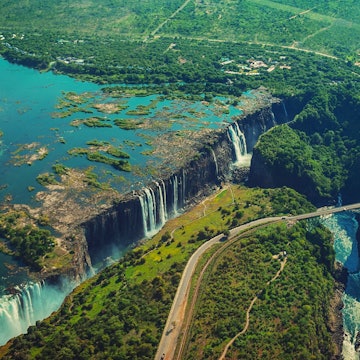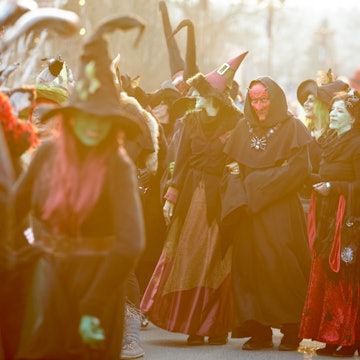

Malawi continues to be in the throes of an inspiring renaissance. Famous for being the 'warm heart of Africa' and for its vast glittering lake, the country is on its way to being renowned as an exciting safari destination. Thanks to conservation organisation African Parks, three beautiful reserves – Majete, Liwonde and Nkhotakota – once decimated through poaching and poverty, are now blossoming with life.

African Parks: rebuilding Africa's wild spaces
African Parks was set up in 2000 by conservationists looking for a new way to restore the continent’s poorest wildlife regions. Working with local governments, it takes full management control of reserves for 25 years, aiming to make them ecologically, socially and financially sustainable.
Today, through donations from philanthropists, governments and NGOs, the South African non-profit organisation manages 15 parks across nine countries: four in Malawi, three in Chad, two in Zambia, and one each in Benin, Central African Republic, Congo, Democratic Republic of Congo (DRC), Mozambique and Rwanda. In total, African Parks protects well over 100,000 sq km of land and its wildlife, representing seven of Africa's 11 biomes – the continent's largest and most ecologically diverse area under conservation management by a single NGO. With a goal of managing 20 parks by 2020, the organisation has already had some astounding results.
In Zambia, African Parks has restored the remote Liuwa Plain National Park, which hosts Africa’s little-known, but second largest, wildebeest migration; in the process the park's population of wildebeest has trebled to over 47,000. The lion population reduced by poaching to a single lioness has correspondingly increased to a pride of 10, including two cubs born last year, while Liuwa’s cheetahs and spotted hyenas are also thriving. In eastern Zambia’s beguiling Bangweulu Wetlands, African Parks is protecting the weirdly prehistoric-looking shoebill, one of the continent’s rarest birds. In Rwanda’s Akagera National Park, where animal populations had dwindled following the country’s horrific genocide, the organisation has reintroduced thousands of animals. Following the translocation of 18 black rhinos from South Africa in 2017, Akagera became a Big Five (lion, leopard, elephant, rhino and buffalo) park and a 75% self-sustaining tourism destination.

There have, however, been challenges and tragedies along the way, such as in the volatile DRC. In Garamba National Park, bordering war-torn South Sudan, African Parks fights organised criminal gangs and the Lord’s Resistance Army to protect elephants from ivory and bushmeat poaching, with some rangers losing their lives. Between 2002 and 2010, Chad’s Zakouma National Park lost 4000 elephants to poachers, who also executed six rangers during morning prayers. Nonetheless, the NGO has built the largest counter-poaching force among Africa’s conservation organisations, with around 1000 rangers, who are stabilising influences on some of the continent’s wildest areas.
In 2003 African Parks’ first project was Majete Wildlife Reserve in southern Malawi. Today, it’s deservedly their flagship reserve – its regeneration has been phenomenal.
Majete Wildlife Reserve: an example in conservation
Poaching used to be rife across Malawi, one of the world’s poorest countries, and by 1992 Majete was an empty, ghostly shell. Every elephant had been killed and barely any wildlife survived, save for crocodiles, hippos and a few resilient antelope. African Parks has since transformed this reserve into a wildlife wonderland. Costing US$3 million, it has relocated some 2500 animals here, including the famous Big Five and, most recently, a founder population of four cheetahs in July.

A modern-day Noah’s Ark, Majete is now home to over 12,000 animals and 300 bird species. The diverse populations live among gentle rolling hills, riverine landscapes, lush woodlands and the majestic Shire River, which forges its way from Lake Malawi to the Zambezi. On wildlife drives and guided walks, you can see grumpy buffaloes wallowing in mud, elegant eland lying in sandy riverbeds and nyala (striking antelopes with devilish faces) ducking behind bushes. On boat trips, you're more likely to see countless elephants mooching along the riverbanks. Indeed, Majete’s elephants have been so happily breeding that 150 of them were relocated 600km north to Nkhotakota, as part of the historic 500 Elephants translocation that saw Prince Harry, president of African Parks, spend three weeks anaesthetising animals and affixing radio collars.
African Parks works with people as well as wildlife, helping locals benefit from conservation through education, healthcare and income-generating projects, such as Majete’s community-run campsite and visitor centre. Also in the reserve, Sunbird Thawale Camp has tented chalets around a floodlit watering hole frequented by warthogs, and luxurious Mkulumadzi Lodge has eight chic chalets with waterfall-like outdoor rain showers, sunken baths and private decks overlooking the river. Costing €1.3 million, Mkulumadzi opened in 2011, and was a massive vote of confidence in Majete’s incredible revival.
Liwonde National Park: rhinos, elephants and the Shire River
Flowing from Majete’s success, African Parks took on the management of Liwonde National Park in 2015. There’s a wondrous beauty about Liwonde, with dappled mopane woodlands, fever-tree forests, baobab and palm trees, and huge candelabra euphorbia scattered across the landscape. But the Shire River is the star of the show here, cutting a swathe through golden floodplains.

The lodges offer boat and canoe safaris in the park, which is one of Africa’s best spots for river-based wildlife watching. Expect to pass scores of hippos and crocs lingering just a couple of metres from elephants drinking on the riverbank, with the only sound breaking the silence being the big beasts' slurping and gurgling. On the plains, thousands of waterbucks and impala graze quietly, while the reintroduction of predators began with seven cheetahs and 10 lions in the past two years. The first cheetahs seen in Malawi in 20 years, their number has doubled with the birth of eight cubs. Unsurprisingly, the riverside park’s birdlife is mesmerising too, from tiny multi-coloured malachite kingfishers and gigantic goliath herons to elegant African skimmers flying in formation over the water.
Liwonde’s sanctuary, a fenced area within the park, is home to buffalo, zebra, antelope and rare black rhino. Unusually, visitors can track rhino with researchers, learning all about their plight and conservation.
Living alongside wildlife isn’t easy – elephants kill and devour crops – and almost a million people surround this small, 584-sq-km park. Until recently, poaching and human-wildlife conflict were rife here. Helping protect both people and wildlife, African Parks has constructed 117km of electrical perimeter fencing, removed over 36,000 wire snares and, in the biggest translocation of elephants in Africa’s history, moved 350 of the park's 800-plus elephants to Nkhotakota. The charming Mvuu Lodge and nearby camp offer fascinating village visits that reveal glimpses of local life.
Nkhotakota Wildlife Reserve: a time to shine
Exciting times lie ahead for Nkhotakota. After years of neglect that saw its animal populations plummet, this wild chunk of Lake Malawi hinterland also became an African Parks reserve in 2015. Since then, the organisation has worked closely with local communities, helping them to have a better life beyond poaching. Community teams have worked with rangers to collect hundreds of wire traps, fill in pit traps and confiscate illegal firearms, and new livelihoods have been created in and around the park, including beekeeping and agricultural collectives.

African Parks has created a 190-sq-km sanctuary within the 1800-sq-km reserve, which welcomed those 500 elephants from Liwonde and Majete – along with 2000 other animals, including sable, waterbuck, kudu and impala. The resident elephants can often be seen from the crow’s-nest mezzanine viewing platform in the main lodge at the eco-conscious and lovely Tongole Wilderness Lodge overlooking the Bua River. Demonstrating again the benefits of wildlife tourism to local people, Tongole trains and employs 30-plus locals, and its Tongole Foundation supports surrounding communities through initiatives such as distributing mosquito nets. Another excellent option in the reserve is Bua River Lodge, with its safari tents on an island.
Nkhotakota remains one of Malawi’s least developed wildernesses, hilly and rugged and draped in verdant miombo forests with the Bua swelling and shrinking as the seasons change. Even without the wildlife it is special here, perfect for adventurous souls to explore by canoe or on foot with an armed guide. If you decide to tackle the highest peak, Chipata, you might have to carefully avoid a green mamba lying on your path, but you are sure to be rewarded with views of Nkhotakota spanning right across the horizon.
Historically, few visitors make it to Nkhotakota, preferring the better-known southern reserves of Liwonde and Majete. But as African Parks transforms Malawi’s wildlife destinations, this is at last Nkhotakota’s time to shine.
Sue Watt travelled to Malawi with support from African Parks.org, Expert Africa and Malawi Tourism. Lonely Planet contributors do not accept freebies in exchange for positive coverage.
Article first published in October 2016, and last updated in August 2019 by James Bainbridge.













